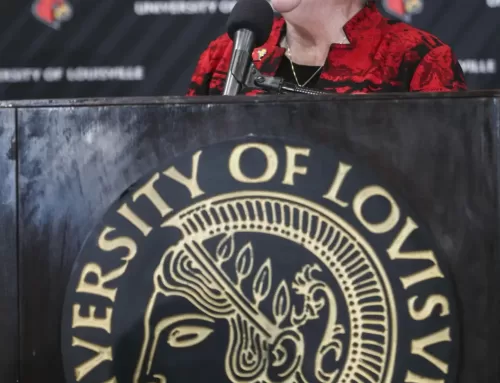–By Kyeland Jackson
A week after the Ville Grill was inspected and received a ‘C’ rating, a re-inspection cleared them with a 100% score. Problems contributing to the rating included ineffective food storage and sanitation of utensils. This is the third C that the Ville Grille has received in the last four years.
The score of 86 can range in severity between locations. A Business First article revealed some restaurants earning the grade for dented cans, while others were earned for expired dairy and presence of rodents. The Department of Public Health and Wellness normally determines a grade of 85 or higher an ‘A’. However, a ‘C’ placard can be given for inspections with critical violations regardless.
Upon receiving both the first and the most recent rating, Matti Verder, Sodexo district manager, expressed his disappointment. “We felt we had followed our policies and procedures accurately,” he says. Verder explains that he and the staff utilize strict guidelines and data collection to deter failure. Regardless, a plan of action is developing to stall the cycle of ‘C’s.
The process of inspection, a branded ‘C’ rating, and remediation within a week has become a cycle for the Ville Grill. However, the primary factors to the failing grades have gradually increased over the years.
The 2012 failure was attributed to a dishwasher that didn’t properly sanitize dishes. Jordan Barnes is a senior who worked at Ville Grill during that time. She explains that the dishwasher was not reaching the temperatures necessary to ensure plates were sanitized. U of L dining services responded to the incident saying, “Your health and safety is the primary concern.” A week later the dishwasher was fixed and score of 100% replaced the failing grade.
Two years later the cycle repeated, with the exception of how they received the grade. The 2014 failure involved factors such as, improper drink storage and hand sanitation between using gloves.
Sodexo, the food service provider for the university, resolved the problem and apologized for its staff who were unaware of procedures. Barnes was no longer employed for Ville Grill in 2014, but explains her empathy because of the difficulty to don gloves between washing hands.
The most recent 2015 rating included a variety of reasons towards failure. The difference between this and years prior were the amount of transparency exercised by Sodexo.
Via a statement issued days after the branding, it was revealed to have failed in terms of cloth and utensil sanitation, food storage, sink repairs and sneeze guards. The document accentuated the urgency of action with all of the issues being handled immediately.
Sodexo commented on the recent issue, saying its intention is to increase efforts and respond pro-actively to health policies. Barnes attested to the good intentions of the management saying the members genuinely care about student safety.
Within the progression of events, an evolution of the incidents and their responses are pronounced. The amount of factors involved are increasing in number, but decreasing in degree. What was reported as one major factor in 2012 has increased to eight minor ones in 2015.
The response from Ville Grill management has increased, as well. Beginning the cycle, there were only responses from the university level of dining. Now, the level of involvement has increased with the Sodexo district manager having an intention to address the issue.
“Plans and conference calls have been made with others to review actions and follow up,” Verder says. He explained they will continue monitoring food safety policies and implement additional procedures and training for staff members.
Verder and staff will also invite regional safety coordinators from Sodexo to audit the sites unannounced.



